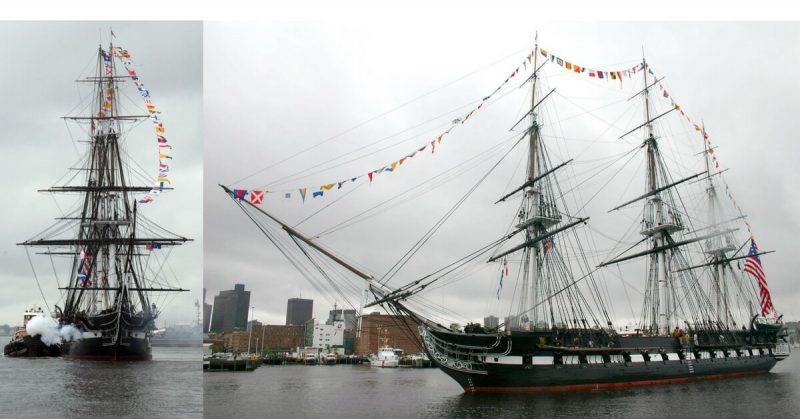Launched in 1797, the USS Constitution is among the oldest warships that’s still seaworthy. Named by President George Washington for the country’s guiding document, the following are five other amazing tidbits about this vessel.
Its nickname, “Old Ironsides,” came about during the War of 1812 when it was fired upon by the HMS Guerriere. People saw cannon balls bounced off the hull, so they thought it was made of metal. It wasn’t.
For that, we have Paul Revere to thank – the man best known for riding his horse and screaming, “The Red Coats are coming!” before the battles of Lexington and Concord. When not doing that, Revere worked as a silversmith and engraver. It was he who made the copper bolts and fastenings used for the Constitution to make it stronger and faster than comparable warships of its time.
But it almost never made it to action. Built at the Edmund Hartt shipyard in Boston, Massachusetts, she was supposed to be launched on September 20, 1797. Dedicated with great fanfare, people watched as she slid down her dock by 27 feet… then stopped.
She was so big and heavy that she grounded and got stuck. The builders therefore had to spend a month rebuilding the ground ways before she finally slipped into the Boston Harbor on October 21.
In 1849, Pope Pius IX and King Ferdinand II visited America without going there. That’s because the Constitution is officially American territory regardless of where it is. So when the ship docked in Gaeta, Italy on August 1 and received the two notables, they officially stepped on US soil.
In 1905, however, she was nearly sunk and destroyed by Bonaparte. Not Napoleon, but Secretary of the Navy Charles Joseph Bonaparte. By then, the Constitution was a derelict thing, so he suggested taking it out to sea and using it for target practice. That outraged the public, forcing Congress to pay for her restoration the following year.
As a result, however, only about 10% to 15% of the original ship still exists – most in the lower part because seawater preserves wood. Though classical in shape and design, much of what’s left is a recreation.
